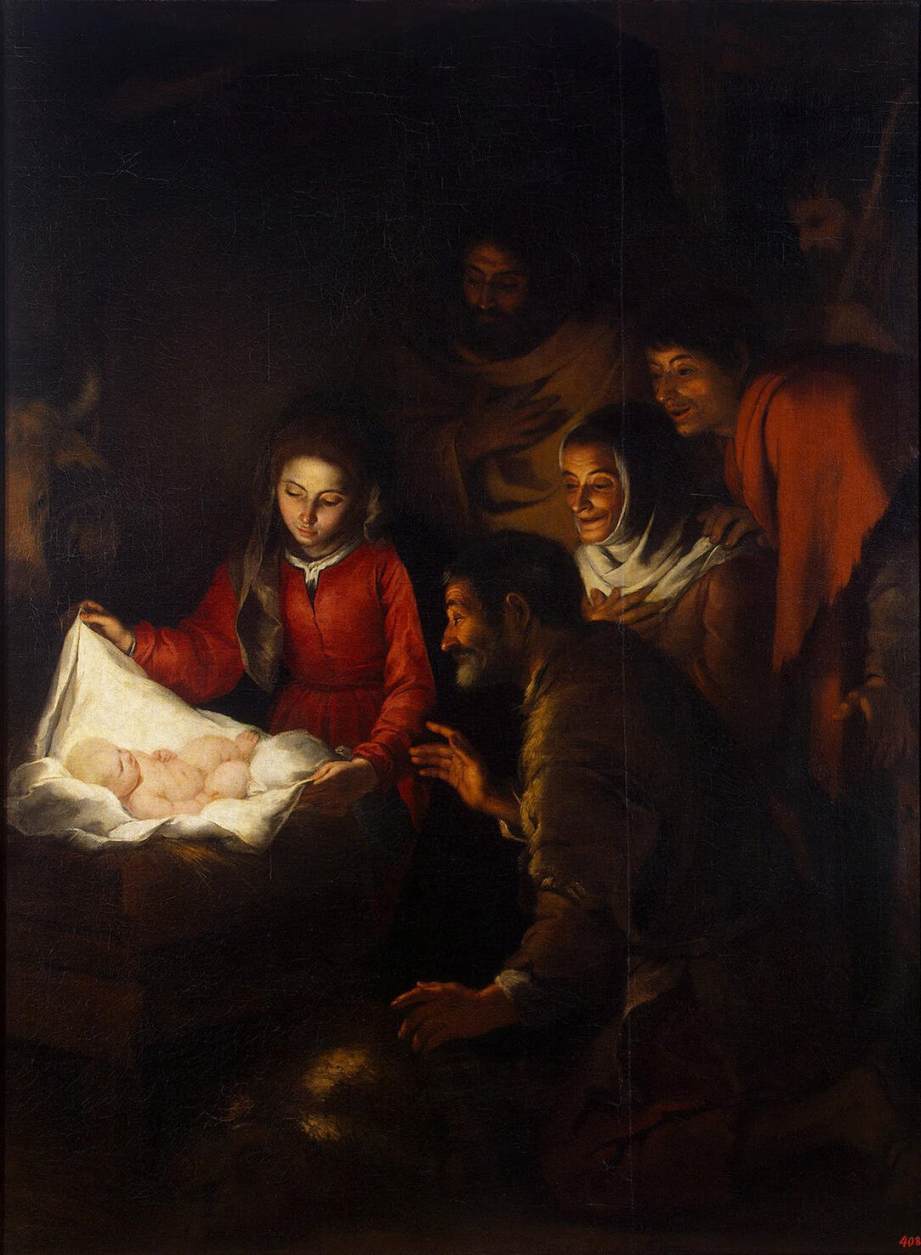‘A new teaching – with authority!’ Sunday Reflections, 4th Sunday in Ordinary Time, Year B

St Joseph and the Christ Child, El Greco, c.1600
Museo de Santa Cruz, Toledo, Spain [Web Gallery of Art]
Readings (New American Bible: Philippines, USA)
Readings (Jerusalem Bible: Australia, England & Wales, India [optional], Ireland, New Zealand, Pakistan, Scotland, South Africa)
Gospel Mark 1:21-28 (New Revised Standard Version, Catholic Edition, Canada)
They went to Capernaum; and when the sabbath came, Jesus entered the synagogue and taught. They were astounded at his teaching, for he taught them as one having authority, and not as the scribes. Just then there was in their synagogue a man with an unclean spirit, and he cried out, “What have you to do with us, Jesus of Nazareth? Have you come to destroy us? I know who you are, the Holy One of God.” But Jesus rebuked him, saying, “Be silent, and come out of him!” And the unclean spirit, convulsing him and crying with a loud voice, came out of him. They were all amazed, and they kept on asking one another, “What is this? A new teaching—with authority! He commands even the unclean spirits, and they obey him.” At once his fame began to spread throughout the surrounding region of Galilee.

Remains of the 4th century synagogue, Capernaum
[Wikipedia, David Shankbone]
On Friday 9 January my brother Paddy, with many of his classmates, attended the funeral in Dublin of the man they knew in 1954-55 as ‘Mr O’Donohue’ when he taught them in Second Class (Grade Two) in O’Connell Schools, Dublin. At the time they saw him as very senior in age but he was only 22, starting out as a primary school teacher. Years later they were to come to know Sean Gerard O’Donohue as their friend ‘Gerry’ because of the enormous and formative impact he had on their lives.
Towards the end of the 1954-55 academic year, which in Ireland runs from late August or early September to the end of May or early June, depending on the level, he asked them ‘What’s special about today?’ None of them saw anything of note until he pointed out that it was 5/5/55. Then he said, “It would be nice if you wrote to me on 6/6/66 to let me know how you’re doing’.
Twenty responded to his request and out of that came a series of dinner reunions on 6/6/66, 7/7/77, 8/8/88, 9/9/99 and on 5/5/05, with some coming from overseas, including the USA. Gerry was at all of these, as he was on 12/12/12 in the new century/millennium. But this time they gathered for lunch – starting at 12:12pm. And it was given a spot on national radio for which a niece of Gerry’s works.
Primary teachers had to have music classes where they would teach certain songs in Irish and in English that would, so to speak, have the approval of tradition. But that year a big hit was The Ballad of Davy Crockett.
The boys of Second Class adopted this as their class song, with the full approval of their young teacher, allowing them to ‘stretch’ tradition a little. (Both my brother and I have inherited a strong respect for traditions, which are living realities that create special bonds within families, within larger groups, and between generations, from our mother who wasn’t, however, a doctrinaire ‘traditionalist’.)
It was no big surprise when Mr O’Donohue, who spent his whole career in the one school became its principal. Though he never taught me, he always greeted me by name and on occasions when I’d visit the school while home from the Philippines he remembered me.
What this man had, and what drew such respect, loyalty and affection for him for six decades was an inner authority, the kind of authority that the people recognised in Jesus in today’s gospel and that is noted in a number of gospel stories. Gerry O’Donohue respected the more than 40 youngsters with whom he spent that academic year.
In those days the one teacher in primary school taught everything to the pupils. I don’t know if Mr O’Donohue ever used the leather strap that teachers had in those days to ‘biff’ students – on the palm of the hand – for misdemeanours. If he did it would have been very sparingly. Another genial teacher whom my brother had in primary school, Mr Maher, known as ‘Ned’, took out the leather strap at the beginning of the year and said, ‘You play ball with me – and I’ll play ball with you.’ He then put it in the drawer and the youngsters never saw it again. He too had an inner authority, with respect for the youngsters he was teaching and a desire to enable them to grow as human beings and in their faith. Our school was a Catholic school for boys, the teachers all men, and each taught catechism every day. The most effective were those in whom we saw the faith lived quietly.
In his general audience last Wednesday Pope Francis spoke about fatherhood. He acknowledged that he was emphasising the darker side of this – so that this coming Wednesday he could focus on the beauty of fatherhood. He said:
They are orphans, but within the family, because the fathers are often absent, also physically, from home but above all because, when they are home, they do not behave as fathers, they do not have a dialogue with their children. They do not fulfil their educational task; they do not give to their children – with their example accompanied by words –, those principles, those values, those rules of life that they need, just as much as they need bread. The educational quality of the paternal presence is all the more necessary the more the father is constrained by work to be far from home. At times it seems that fathers do not know well what place to occupy in the family and how to educate the children. And then, in doubt, they abstain, they withdraw and neglect their responsibility, perhaps taking refuge in an improbable relation ‘on par’ with the children. However, it is true that you must be a companion to your child but without forgetting that you are the father. However, if you only behave as a companion on a par with your child, you will not do the child any good.
My brother and I were blessed with parents who led by example. A regular threat from Dad was ‘I’ll give you a good clip in the ear if you do that again.’ It was always a ‘good clip’ never just a ‘clip’. But whether good or otherwise it was never delivered because we both saw clearly the inner authority of the deep faith that he lived quietly, not piously, and how it was integrated with every other aspect of his life, especially his family and on the building (construction) sites where he spent all his working life, most of it as a highly respected general foreman and mentor. He attended Mass every day of his life, including t12 August 1987, the day he died suddenly.
Teachers such as Gerry O’Donohue and Ned Maher, both married, though the latter had no children, deepened the sense of fatherhood for young boys whose experience with their dads was good. For those who had lost their fathers, either through death or absence, they saw in their teachers something of what fatherhood is.
In his meeting with families on his recent visit to Manila Pope Francis spoke about St Joseph: Just as the gift of the Holy Family was entrusted to Saint Joseph, so the gift of the family and its place in God’s plan is entrusted to us. Like Saint Joseph. The gift of the Holy Family was entrusted to Saint Joseph so that he could care for it. Each of you, each of us – for I too am part of a family – is charged with caring for God’s plan. He was here recognising the authority of St Joseph as the husband of Mary and the legal father of Jesus – since he was the one who named him.
And something that struck me forcibly, though I didn’t read or hear any comment on it, was that Pope Francis cut short his visit to Tacloban City – the very reason he had come to the Philippines – because the pilot of his aircraft had told him that the approaching storm made it imperative that they leave at 1pm instead of 5pm. Like Jesus as a child and adolescent yielding to the proper authority of St Joseph, whose name Pope Francis has added to Eucharistic Prayers II, III and IV, the Holy Father yielded to the proper authority of the pilot.
They were all amazed, and they kept on asking one another, “What is this? A new teaching—with authority! He commands even the unclean spirits, and they obey him.”
Composed by Carlo Gesualdo (1566- 1613)
Sung by the Oxford Camerata directed by Jeremy Summerly
Antiphona ad communionem Communion Antiphon Cf. Ps 30:17-1
Illumina faciem tuam super servum tuum,
Let your face shine on your servant.
et salvum me fac in tua misericordia.
Save me in your merciful love.
Domine, non confundar, quoniam invocavi te.
O Lord, let me never be put to shame, for I call on you.














